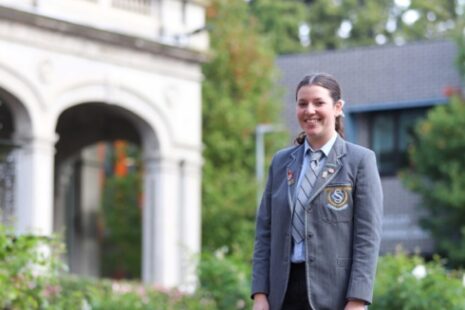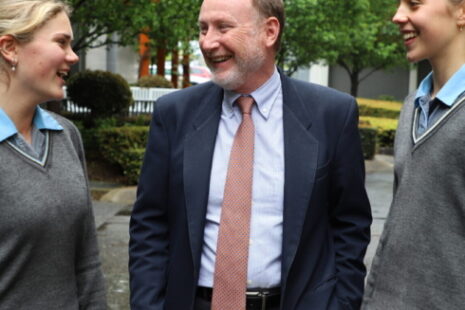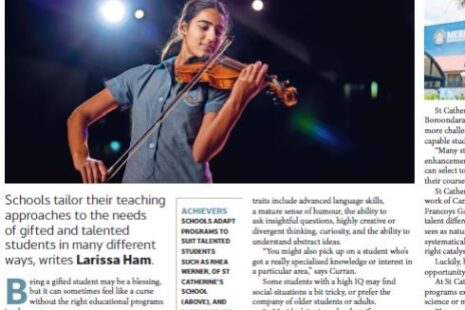What will it take?
“With a worldwide decline in student participation in STEM taking place at a time when increasingly complex global issues demand a scientifically literate citizenry, transforming how we teach science is becoming more urgent.”
For most, primary school is the place where early interest in science begins or ends. A student that does not engage with science learning early on, is unlikely to continue the subject in high school and into university.
Furthermore, significant research and report findings are highlighting that Australia’s performance in science continues to slide due to ineffective, traditional teaching practices and an outdated curriculum, which is leading to students becoming disengaged with the subject.
Research also shows that students are forming their attitudes to science in the upper-primary, lower-secondary years. So, once they have an attitude where they think science is too hard, for example, it is difficult to change that view. We must, therefore, plant the seeds of science early in a child’s education.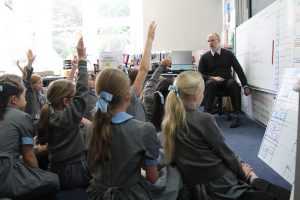
Therefore, the challenge remains, what will it take? What is needed to make primary science education better and how can we engage children with science?
In 2006, at the conference on ‘Boosting Science learning – What will it take?’, the Australia Chief Scientist at the time, Jim Peacock said that “Science education shouldn’t be prescriptive – it is about the ‘spark of excitement’ that stems from discovery”.
He further reiterated that “hands-on, open-ended and relevant ‘real-world’ tasks are vital – students need to understand the world around them and make rational decisions on important issues.”
To help facilitate this new way of learning there also needs to be improvement in science teaching, professional learning and the connection between schools, universities and science professionals in industry.
In early childhood, we should be involving children in play with the environment around them, both the biological environment as well as the physical. While the students enjoy that, it also does two things: increases their vocabulary of the world around them and it increases science observation skills. Children are curious and interested in their world, especially when they can talk about what they observe and what they engage with.
With older students, we need a more hands-on and minds-on approach to science, particularly with chemistry and physics-based topics. Curriculum that is inquiry-based and provides an opportunity to express and critique ideas or participate in discussion of evidence and explanation is what we should aim to achieve. There is considerable evidence that engagement with deeper learning results when students are given the opportunity to generate their own ideas and critique and refine these with teacher guidance.
The integration of STEM-based education in schools has helped inspire students to relate science to their everyday lives. One of the aims of the STEM movement is to interconnect and apply scientific concepts with other disciplines to solve real-world problems. This has helped provide students with opportunities to learn and experience hands-on science aligned with scientific working and thinking.
Currently, there are several new government initiatives to improve the quality of pre-service teacher’s training in Science. Many of these involve establishing strategic links between schools and science professionals from industry. These include The Reconceptualising Maths and Science Teacher Education Programs (ReMSTEP), the STEM Professionals in Schools, the Early Learning STEM Australia (ELSA) program and the Little Scientists initiative which will target early childhood educators and teachers combining inquiry-based learning with age-appropriate STEM exploration.
How is science and ‘STEM’ being taught in the early years at St Catherine’s?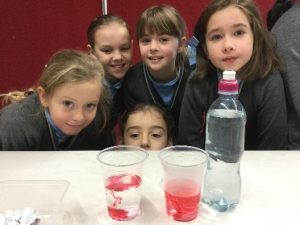
We are committed to engaging our students with science early on and this is synonymous from the very beginning with the Reggio Emilia approach in the Early Learning Centre.
The skills of play and discovery (observation) and concepts of science (in particular the natural sciences) are an integral component of the Reggio Emilia approach to learning which is grounded in inquiry and is very compatible with science education goals. It offers a science-rich context that triggers inquiries and effectively engages our students through hands-on play, sharing ideas and making connections to what students know.
In the Junior School, we are engaging students through an hour-long STEM focused lesson each week, where Years 3 and 4 students are able to apply the skills of inquiry, problem-solving and design thinking, whilst using different learning technologies.
During this session, students have been fascinated by ‘Wonderbots’, using them to navigate around a labyrinth to learn about the history of code and develop a basic understanding of coding. Through Play-Doh models, students engaged in exploring the different parts of the human brain, their functions and how messages are sent to the brain when touching hot or cold items.
To capture student’s interest from the very start of a lesson, lessons are often commenced exploring the achievements of influential female scientists, such as Ada Lovelace and Maria Mitchell. A provoking question may also be raised to incite wonderment or pose a problem to solve.
In the Junior School, we are focussed on building the students scientific literacy and doing so, through highly engaging unplugged activities and hands-on constructions. Recently, they used various materials to explore what it means to have ‘flexible thinking’ and how to apply this to solving real-world scientific problems. In doing this, the students worked in pairs to sort a large collection of materials and items into two groups, ones that can flex and bend and those that are hard and rigid.
They have also explored the concepts of computational language through the creation of a maze from blocks on a board and recording the paths from start to end using directional language, similar to what is used to move characters in a software program using code.
During, ‘Stem in the Morning’ students are applying the knowledge of symmetry, angles and measurement to construct periscopes and tetrahedron kites. They have also applied measurement to make fizzing soap, slime and diamond shape window decorations. These sessions, which focus on the ‘Learning by Doing’ principle, have significantly developed our student’s confidence in mathematics and science and their ability to relate to everyday life.
These are truly ‘hands-on’ lessons our students are receiving. They are not only highly engaging but also very relatable for our students.
It is clear that the focus of science education should be on engaging young people, not just on developing future scientists. We need to build a culture of interest in science that will enable Australians to cope with a future that will be very much dependent on science and technology.


